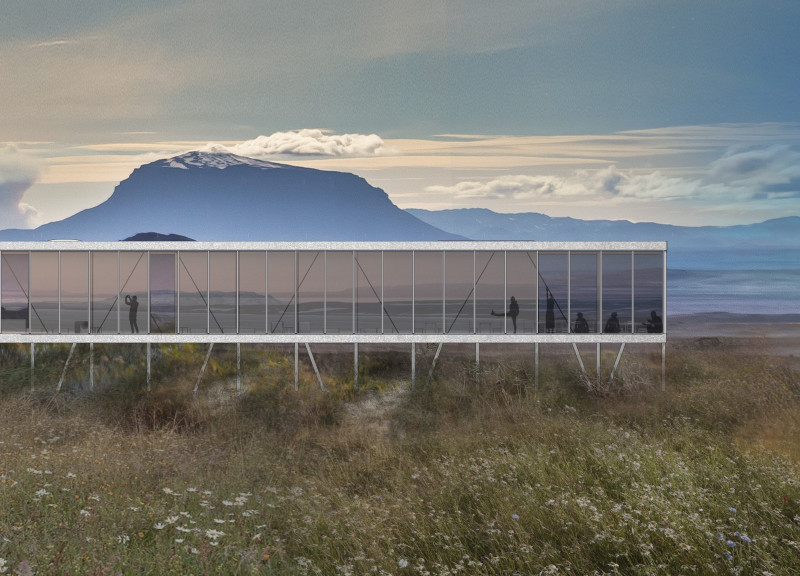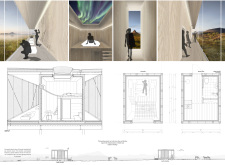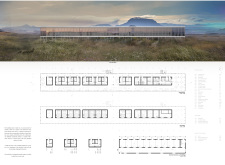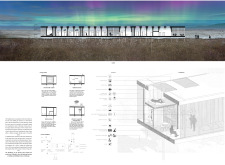5 key facts about this project
This project serves multiple functions that cater to both communal and individual needs, providing areas for gathering, relaxation, and creative endeavors. The layout is designed with open, fluid spaces that allow natural light to permeate through expansive glass elements, fostering a welcoming and inviting atmosphere. Viewpoints are strategically placed throughout the building, ensuring that occupants can engage with the picturesque landscapes at every turn. This design encourages a seamless transition between indoor and outdoor environments, reflecting the designers' intention to create a structure that harmonizes with its natural setting.
Key components of the project include a combination of interior spaces that support various activities, from collaborative work settings to cozy, private retreats. The incorporation of large windows and thoughtful spatial organization enhances the visual connection to the outside, effectively fostering an immersive experience with nature. Architectural elements are meticulously designed to facilitate not only functionality but also an aesthetic dialogue with the surroundings.
A standout aspect of the design is its modular approach, which allows for flexible space configurations. This adaptability makes the building suitable for a diverse range of uses, responding effectively to the evolving needs of its users. The architects placed a significant emphasis on sustainability, integrating energy-efficient systems, such as natural ventilation and solar energy solutions. These practices not only reduce the building's carbon footprint but also enhance the overall experience for those who inhabit the space.
The careful selection of materials also plays a crucial role in the architecture of this project. With an emphasis on natural and durable materials, such as wood, glass, steel, and concrete, the design maintains a connection to the earth while ensuring structural integrity. The use of locally sourced materials reinforces ties to the locale and minimizes environmental impact.
Engagement with the surrounding environment is central to the architectural philosophy behind the project. The structural form is intentionally sculpted to echo the natural contours of the landscape, allowing it to blend organically with its surroundings. By considering ecological footprints and the local ecosystem, the project exemplifies a holistic approach to architecture that looks beyond mere functionality.
The user experience is enriched by the strategic design of both private and communal spaces, promoting a sense of community while allowing for personal reflection and privacy. This balance encourages a well-rounded experience, addressing the varied desires of the inhabitants and providing opportunities for social interaction within a tranquil setting.
In this context, the architecture serves not only as a building but as a living part of the landscape itself. This project invites viewers to explore its numerous architectural details, including architectural plans, sections, and innovative designs, to gain a deeper understanding of how these elements contribute to its overall vision. Readers are encouraged to delve into the presentation of the project, uncovering the profound architectural ideas that define this unique endeavor.


























